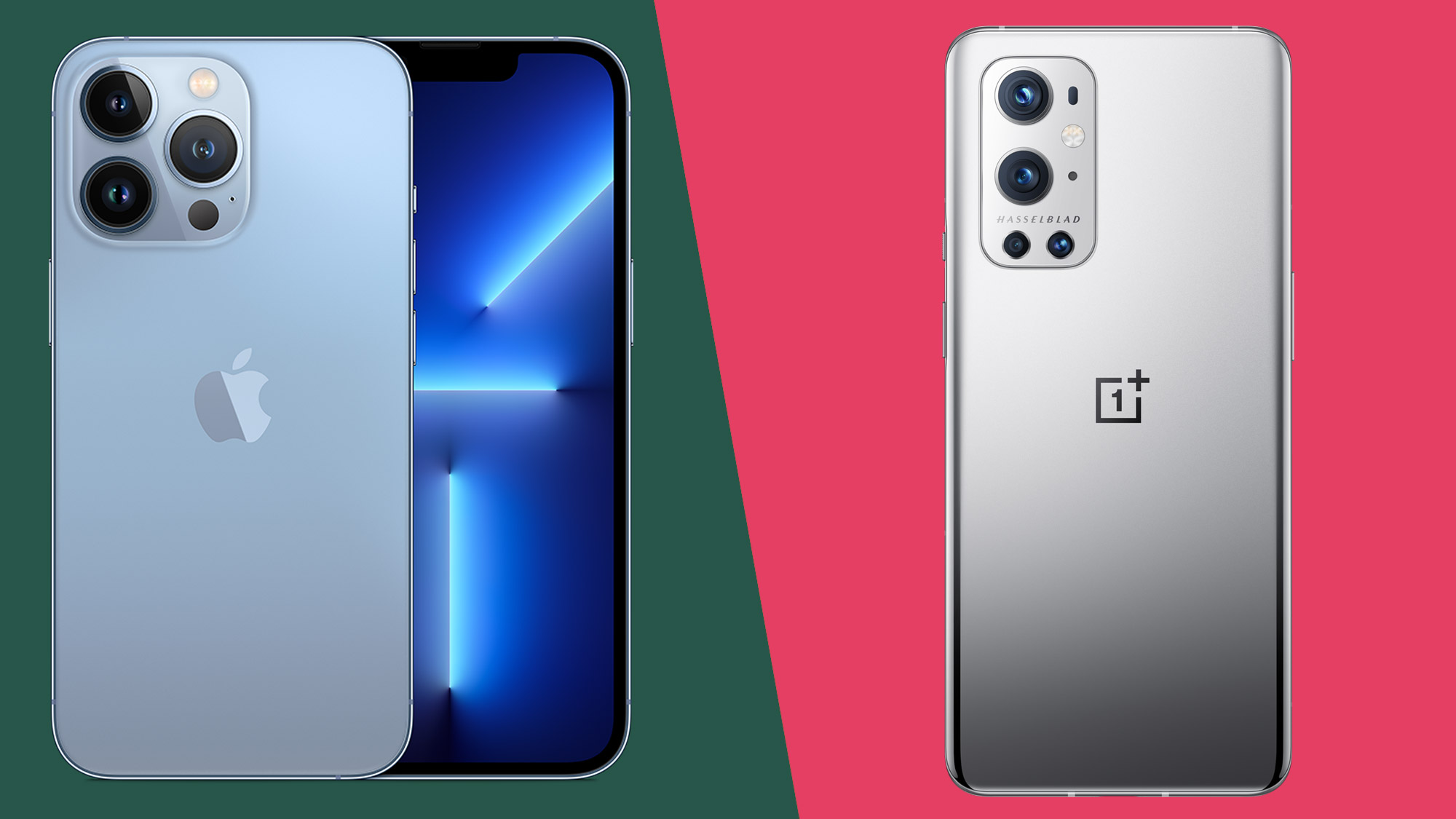
The world of high-end smartphones is a fast moving one. Today’s champion is tomorrow’s forgotten also-ran.
Thankfully, the OnePlus 9 Pro is good enough that it remains relevant months after its release. Still, the arrival of the iPhone 13 Pro has undoubtedly taken a good portion of the attention of late.
So how does the OnePlus 9 Pro compare to the iPhone 13 Pro? Is this even a competitive fight between equals, or are we looking at a vast generational divide?
Let’s take a look at how these two ‘phone of the year’ contenders compare.
iPhone 13 Pro vs OnePlus 9 Pro price and availability
The iPhone 13 Pro arrived on September 24, 2021. Apple’s pricing starts at $999 / £949 / AU$1,699 for the entry-level 128GB model of the iPhone 13 Pro, while the 256GB model costs $1,099 / £1,049 / AU$1,869, and the 512GB model costs $1,299 / £1,249 / AU$2,219.
There’s also a new 1TB model this time, which costs $1,499 / £1,449 / AU$2,569.
The OnePlus 9 Pro hit shops on March 30, 2021 with prices starting from $969 / £829 for 8GB of RAM / 128GB of storage. Moving to 12GB/256GB costs $1,069 / £929. Australian readers can’t get the OnePlus 9 Pro, for whatever reason.
Get daily insight, inspiration and deals in your inbox
Sign up for breaking news, reviews, opinion, top tech deals, and more.
OnePlus wins on price, then, especially given that you can probably obtain a OnePlus 9 Pro for even cheaper if you shop around.
Design
Apple changed tack with its iPhone design last year, so it’s understandable that there are few changes this year.
Or, to put it another way, the iPhone 13 Pro looks an awful lot like the iPhone 12 Pro. There’s the exact same flat-edged shape and surgical-grade stainless steel rim, with only the larger camera module really standing out as different.
The OnePlus 9 Pro’s curvier, more generic design goes back even further. It’s not all that different to the OnePlus 7. It still looks and feels premium, though, with aluminum edges and glass surfaces.
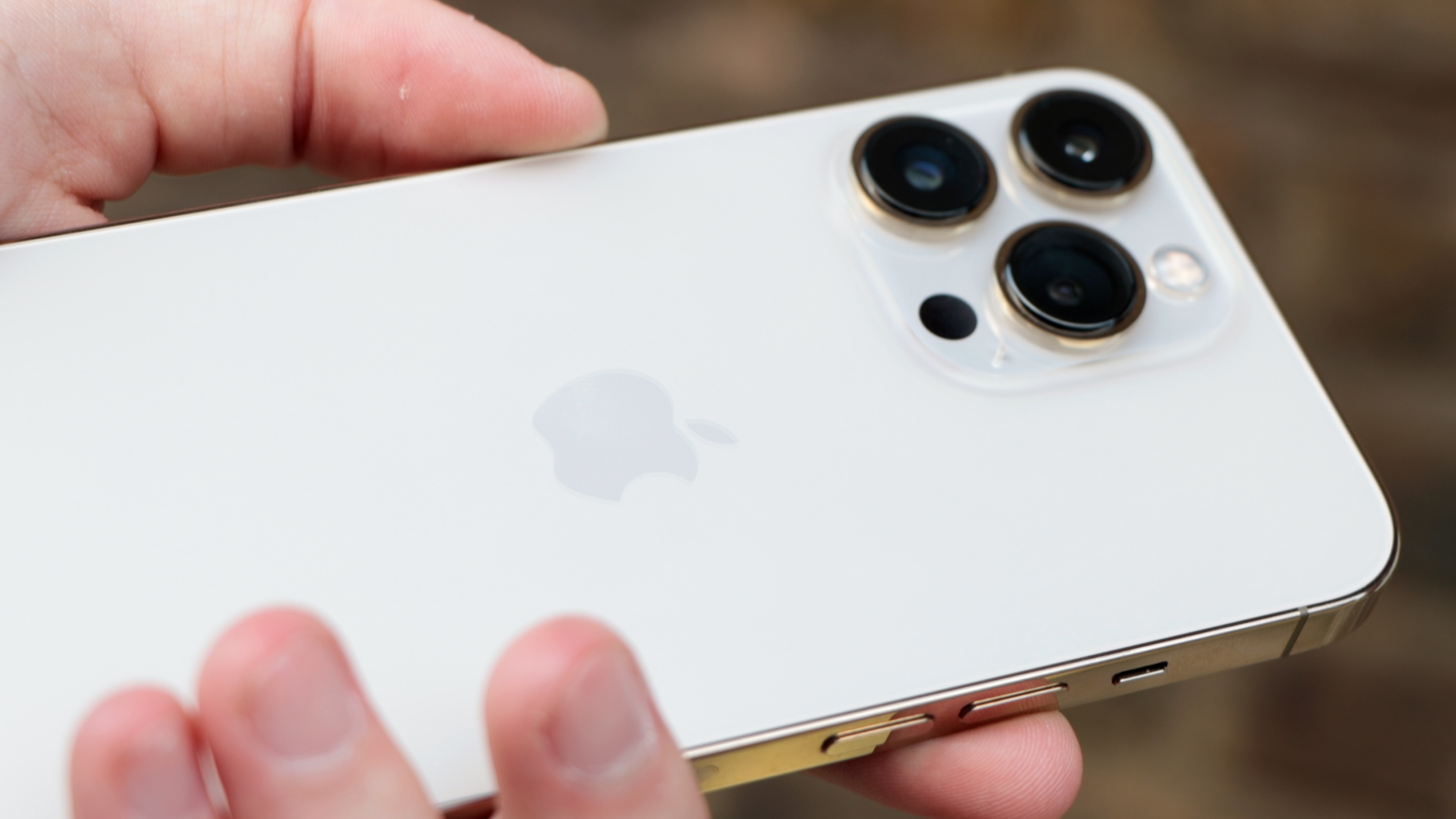
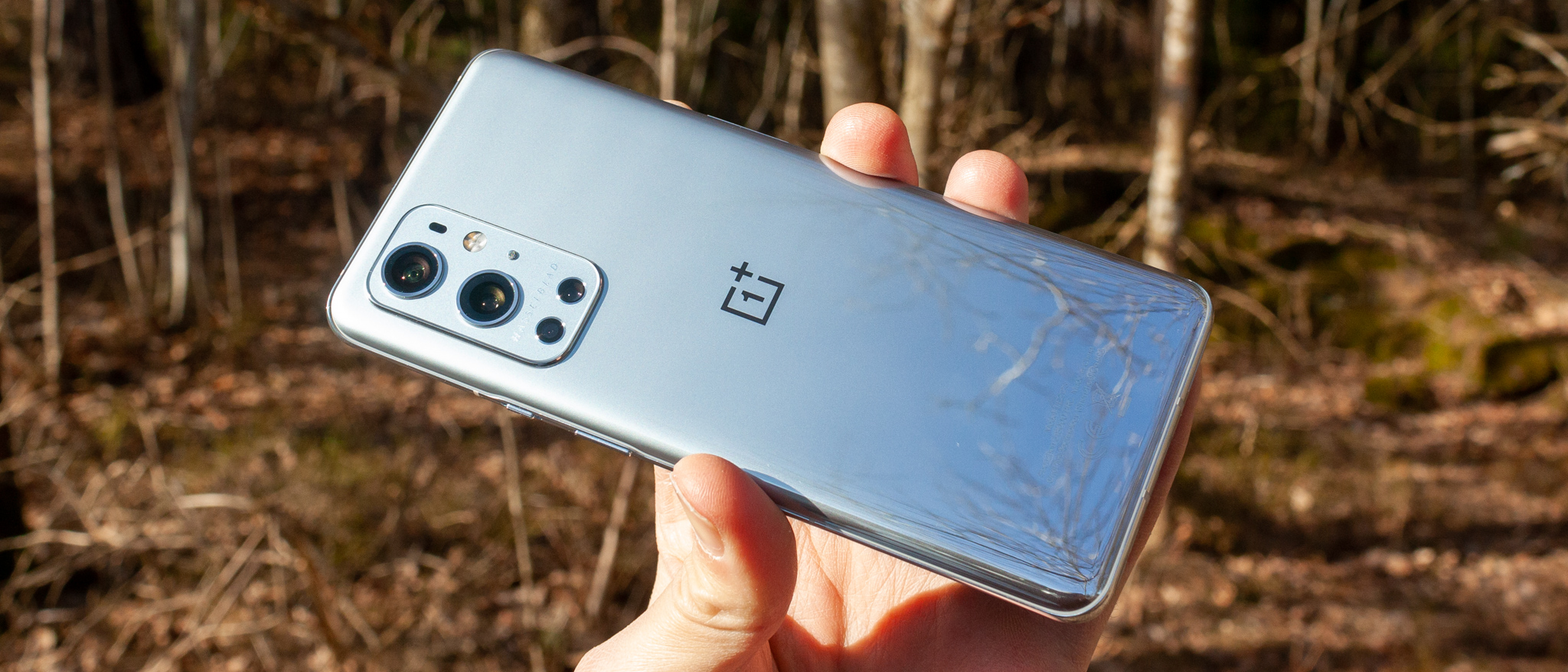
It’s a lot bigger than the iPhone 13 Pro, at 163.2 x 73.6 x 8.7mm. Apple’s phone is quite a bit smaller in every way, in fact, at 146.7 x 71.5 x 7.65mm.
Curiously, however, the iPhone 13 Pro is the heavier phone of the two at 204g. The OnePlus 9 Pro weighs in at 197g. You can probably thank the iPhone 13 Pro’s stainless steel rim for that, which is a heavier (but sturdier) material than aluminum.
Apple reduced the size of the iPhone 13 Pro’s display notch by 20%. It’s not a massive change, and the OnePus 9 Pro’s compact hole punch notch is much more elegant.
Just as divisive will be the matter of display edges. Do you like yours flat (iPhone) or curved (OnePlus)? The tide of public opinion appears to be shifting back toward the former, but the OnePlus 9 Pro certainly looks stylish in its own way.
All in all, we’d say that the iPhone 13 Pro has the more premium, eye-catching design of the two phones.
Display
There are some intriguing differences between these two displays, and also some intriguing commonalities.
The OnePlus 9 Pro’s 6.7-inch screen is much larger than the iPhone 13 Pro’s 6.1-inch display. It’s also quite a bit sharper, thanks to a QHD (3216 x 1440) resolution.
The iPhone 13 Pro only hits 2532 x 1170, though you’d struggle to see the difference side by side. Both are extremely crisp.
Both are vibrant OLED displays, so color accuracy, contrast, and HDR support isn’t an issue. The iPhone 13 Pro screen can hit 1,200 nits, while the OnePlus 9 Pro display can hit 1,300 nits.
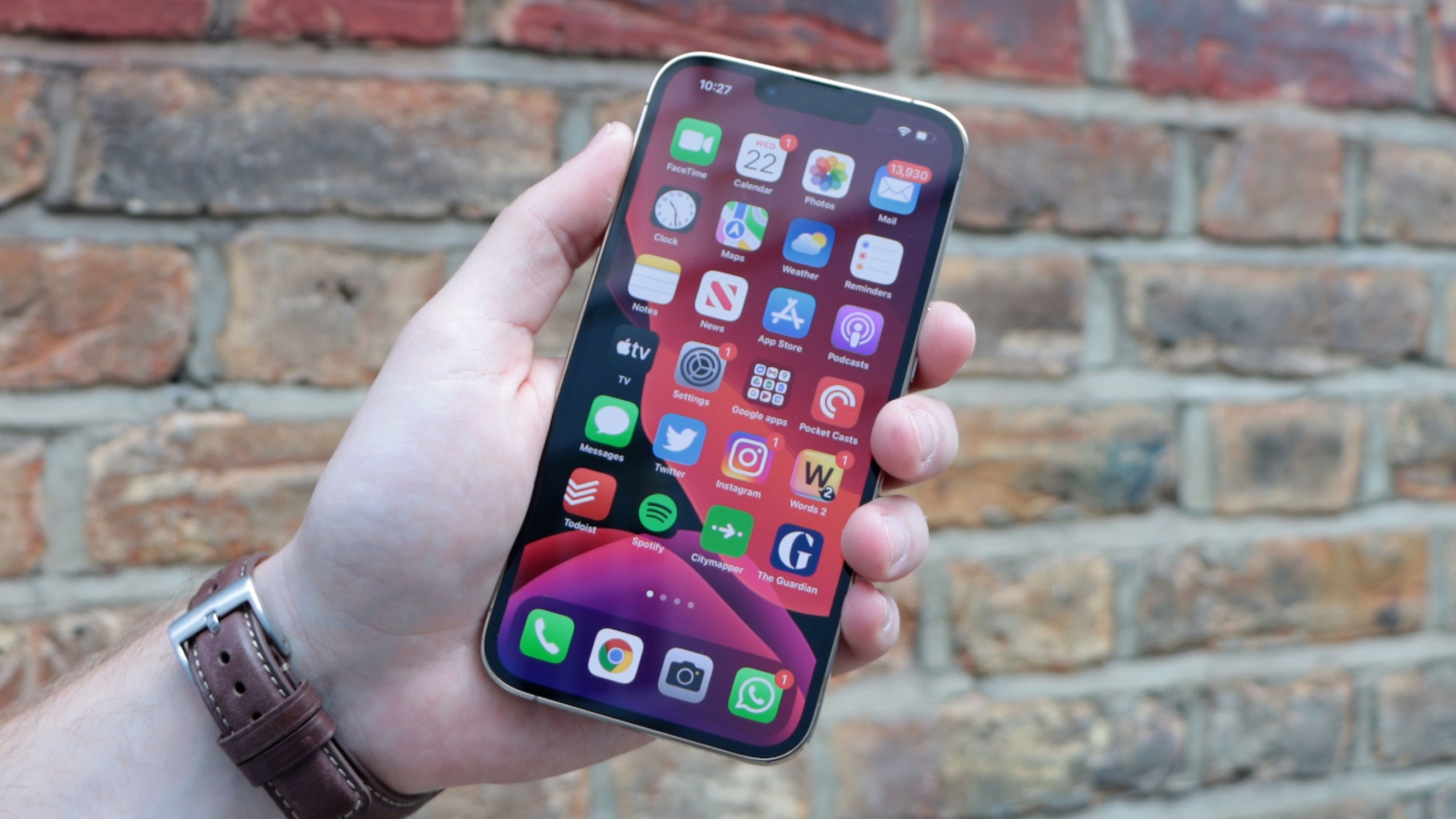
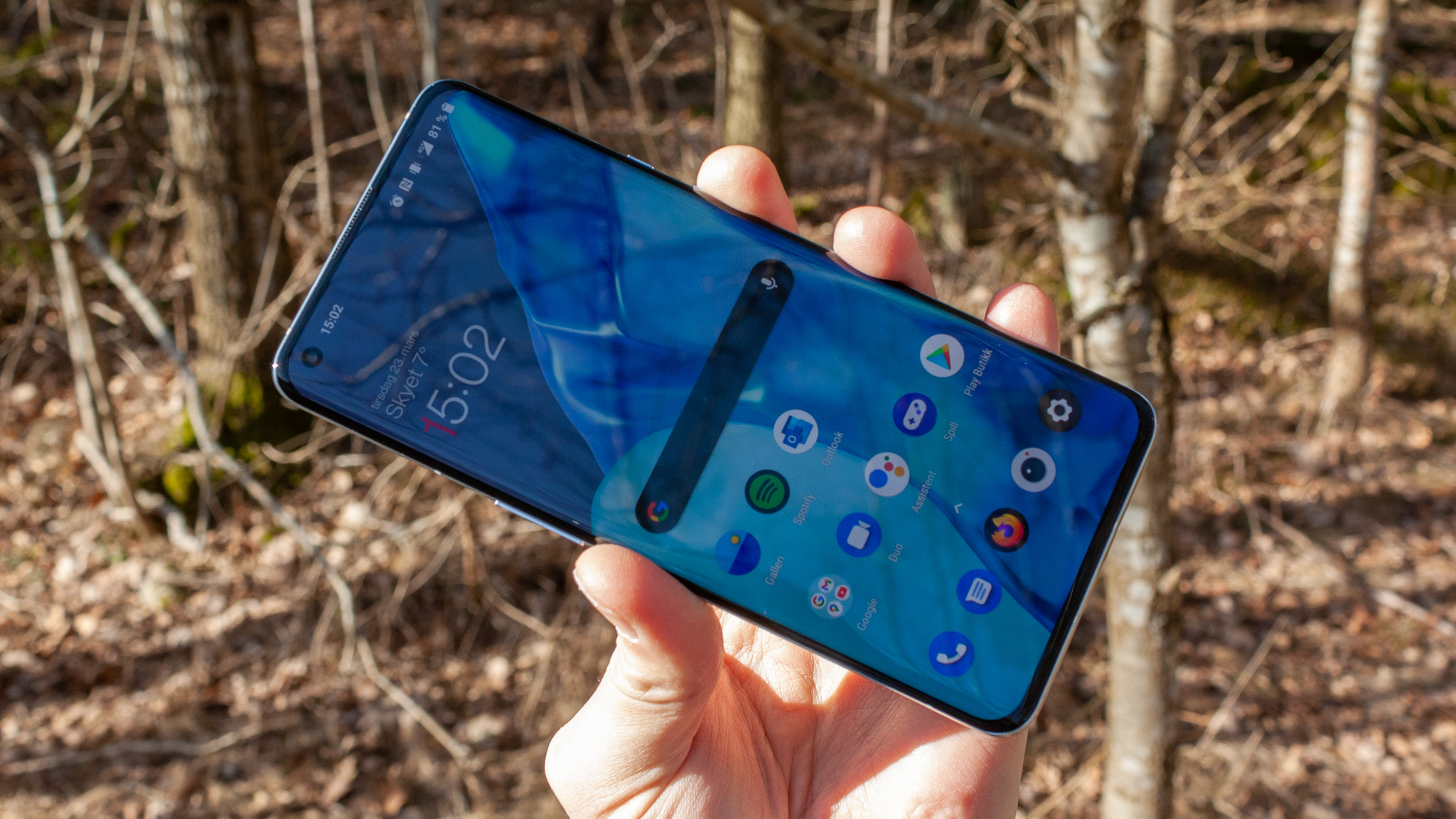
Interestingly, both the iPhone 13 Pro and the OnePlus 9 Pro can hit super-smooth 120Hz refresh rates. Not only that, but both use LTPO (low-temperature polycrystalline oxide) technology, so they can scale up or down according to the app or task.
While the iPhone 13 Pro scales down to 10Hz, though, the OnePlus 9 Pro dips all the way to 1Hz. Apple’s implementation extends to the fine detail of the UI, however, which tracks and scales according to the speed of your touch inputs.
The OnePlus 9 Pro seems to have the edge on paper, then, but make no mistake – these are both excellent, balanced screens that portray all kinds of content superbly.
Cameras
Apple and OnePlus came from very different levels of camera expertise with their latest flagship phones. There’s usually an iPhone at or near the top of the camera phone tree, while OnePlus has a reputation for coming up short.
It’s fair to say that Apple meets expectations with the iPhone 13 Pro, while OnePlus exceeds them with the OnePlus 9 Pro.
The iPhone 13 Pro’s triple-12MP system is a notable improvement over the iPhone 12 Pro, with a sensor shift optical image stabilization system making shots even steadier.
This setup includes a new larger wide sensor and a wider f/1.5 aperture (compared to the iPhone 12 Pro’s f/1.6) for a 2.2x improvement in low-light shots.
The iPhone 13 Pro’s ultra-wide sensor has also been widened to an f/1.8 aperture, for a 92% low-light improvement over the iPhone 12 Pro’s ultra-wide. That ultra-wide can also take excellent macro shots from as close as 2cm away.
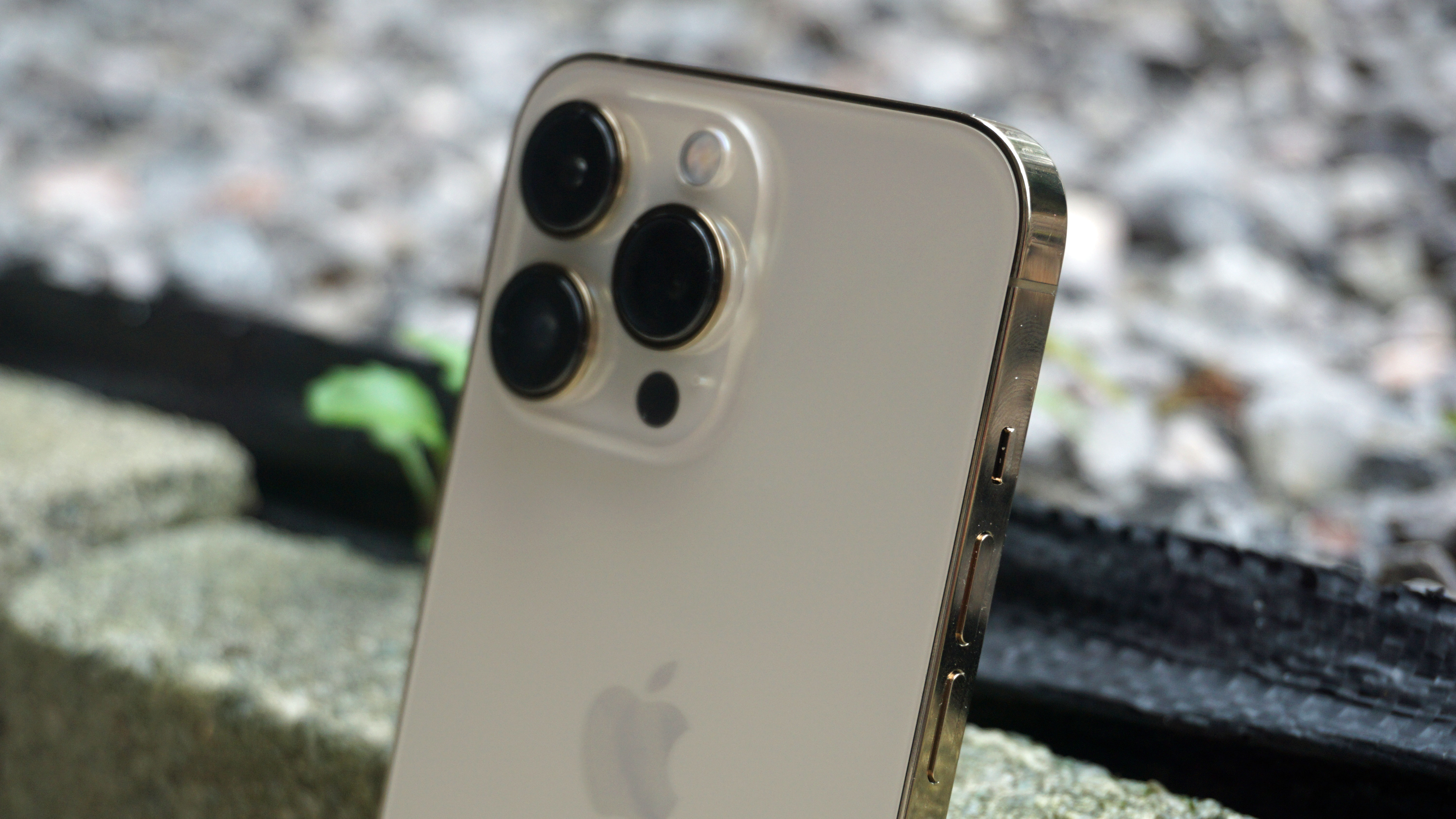
On the telephoto front, you get a 3x optical zoom on the iPhone 13 Pro. It’s now possible to shoot Night mode shots using the telephoto sensor as well.
It’s impressive stuff, but the OnePlus 9 Pro marks an improvement over what came before it. The company teamed up with Swedish camera specialist Hasselblad to tune its color science, resulting in images with extra pop and vibrancy without looking false.
It also gets a custom 48MP Sony IMX789 wide sensor that uses pixel-binning techniques to produce detailed images. Digital Overlap HDR (DOL-HDR) technology shoots long and short exposures close together, which improves clarity when shooting HDR shots.
OnePlus allows you to get a little closer to the action than the iPhone 13 Pro with its 3.3x telephoto, though it’s less sharp at 8MP. There’s also a 2MP monochrome shooter that essentially allows you to get higher quality black and white imagery.
Where the OnePlus 9 Pro really wins brownie points is with its ultra-wide sensor, which could well be the best in the business. It’s a large 50MP Sony IMX766 with a freeform lens that minimizes the usual distortions.
While the OnePlus 9 Pro appears to have the more impressive video capabilities on paper, with support for 4K at 120fps or 8K at 30fps (the iPhone 13 Pro only stretches to 4K at 60fps), Apple’s video capturing mastery continues.
Especially now that the iPhone 13 Pro supports the pro-level ProRes codec, which captures more information for more control in the edit. Cinematic mode is a bit of a gimmick, enabling you to adjust the focus after shooting, but it’s a fun one.
Overall, the OnePlus 9 Pro can’t match the iPhone 13 Pro for all-around image capturing capabilities. But then, it’s arguable that no other phone can, and the OnePlus 9 Pro is a fine effort in its own right.
Specs and performance
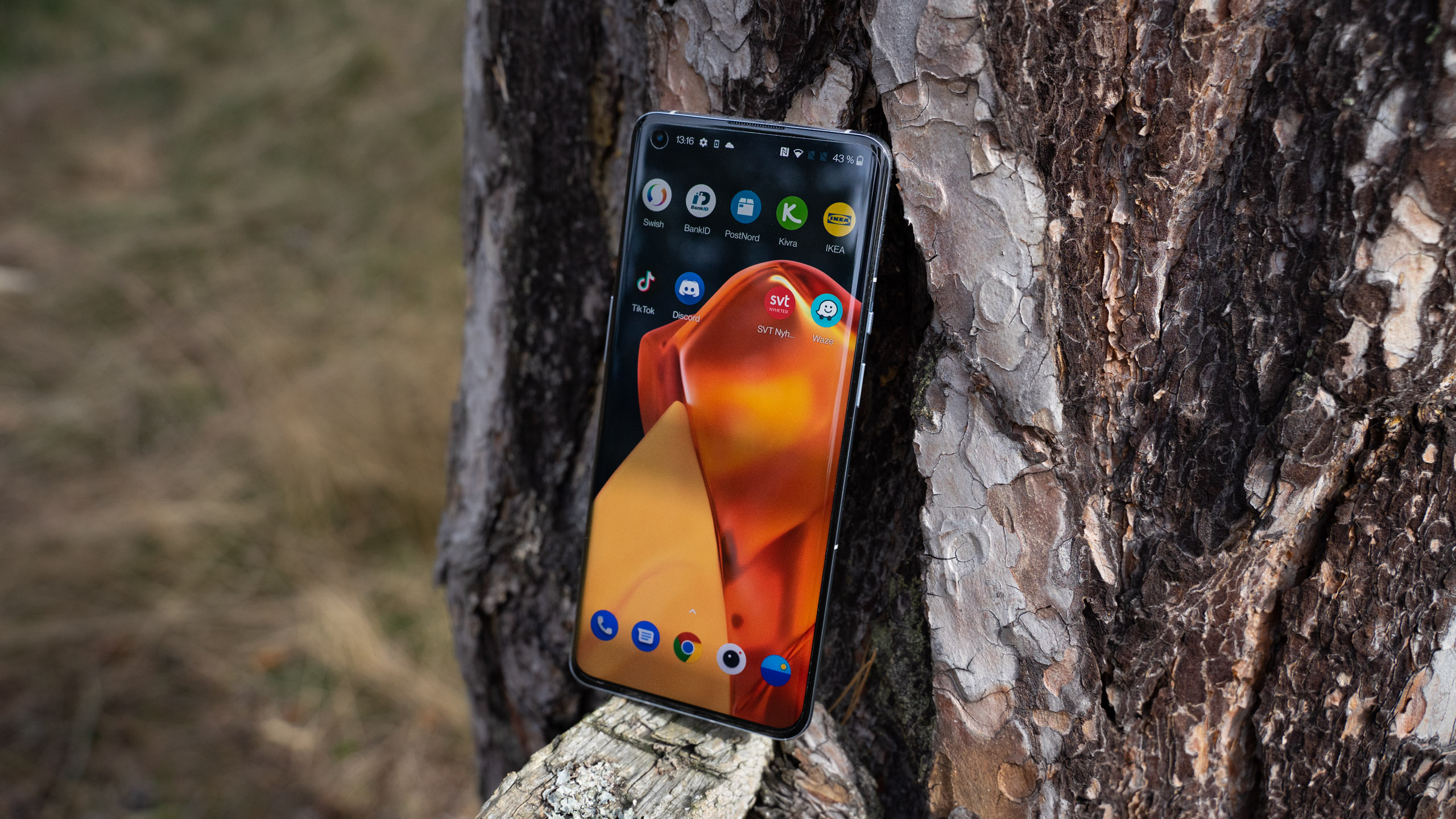
The iPhone 13 Pro’s A15 Bionic is the fastest mobile chip on the market, by some considerable margin. Suffice it to say, the OnePlus 9 Pro’s off-the-shelf Snapdragon 888 doesn’t get close.
Apple claims that the A15’s 6-core CPU and GPU are 50% faster than the leading competition on the Android side. We have to assume that it’s talking about the Snapdragon 888 there, as it powers most modern Android flagships.
The iPhone 13 Pro also achieved 4718 in our CPU-focused Geekbench 5 multi-core test, while the OnePlus 9 Pro hit 3630. Apple’s is clearly the more capable chip.
That doesn’t matter so much in day-to-day usage, though. Both phones run through regular tasks nigh-on flawlessly, and will run the latest games fluidly on high graphical settings.
Where the A15’s advantage may be seen more clearly is several years down the line, when it’ll still feel fast, while the OnePlus 9 Pro may not. But that’s arguably more to do with Apple’s track record of supporting legacy hardware than the hardware itself.
Apple undoubtedly gives you more storage options. There are 128GB, 256GB, 512GB, and 1TB models of the iPhone 13 Pro. OnePlus only gives you 128GB or 256GB models.
OnePlus’s Oxygen OS is way more of a match for iOS than many custom Android UIs prove to be. It’s fast and stylish, building successfully on the solid foundation of Google’s Android OS.
You don’t have to contend with heaps of bloatware, either, so everything’s nice and clean. It’s one of the best representations of Android out there.
It’s still a custom UI, of course, while iOS 15 is precisely as Apple intended it. It’s intuitive, fast, and particularly privacy-focused.
Battery life
The OnePlus 9 Pro has a much bigger battery than the iPhone 13 Pro. We’re talking 4,500 mAh versus 3,095 mAh.
Given the differences between iOS and Android, however, that doesn’t really mean too much.
In practice, both phones are good for a day of moderate usage, but the iPhone 13 Pro can perhaps be pushed a little harder. Apple gave the iPhone 13 Pro an estimated 1.5 hours of extra battery life per charge compared to previous models, and we wouldn’t dispute that claim.
However, OnePlus wins a clear victory when it comes to charging. The company supports 65W charging, while the iPhone 13 Pro only extends to 20W. You’ll get that 65W charger in the OnePlus 9 Pro box, too, whereas you’ll need to buy your own for the iPhone 13 Pro.
This is more than merely a case of being faster. The OnePlus 9 Pro’s charging speeds are genuinely transformational. When you can complete a 0% to 100% charge in around 30 minutes, you no longer feel obliged to plug it in overnight.
Takeaway
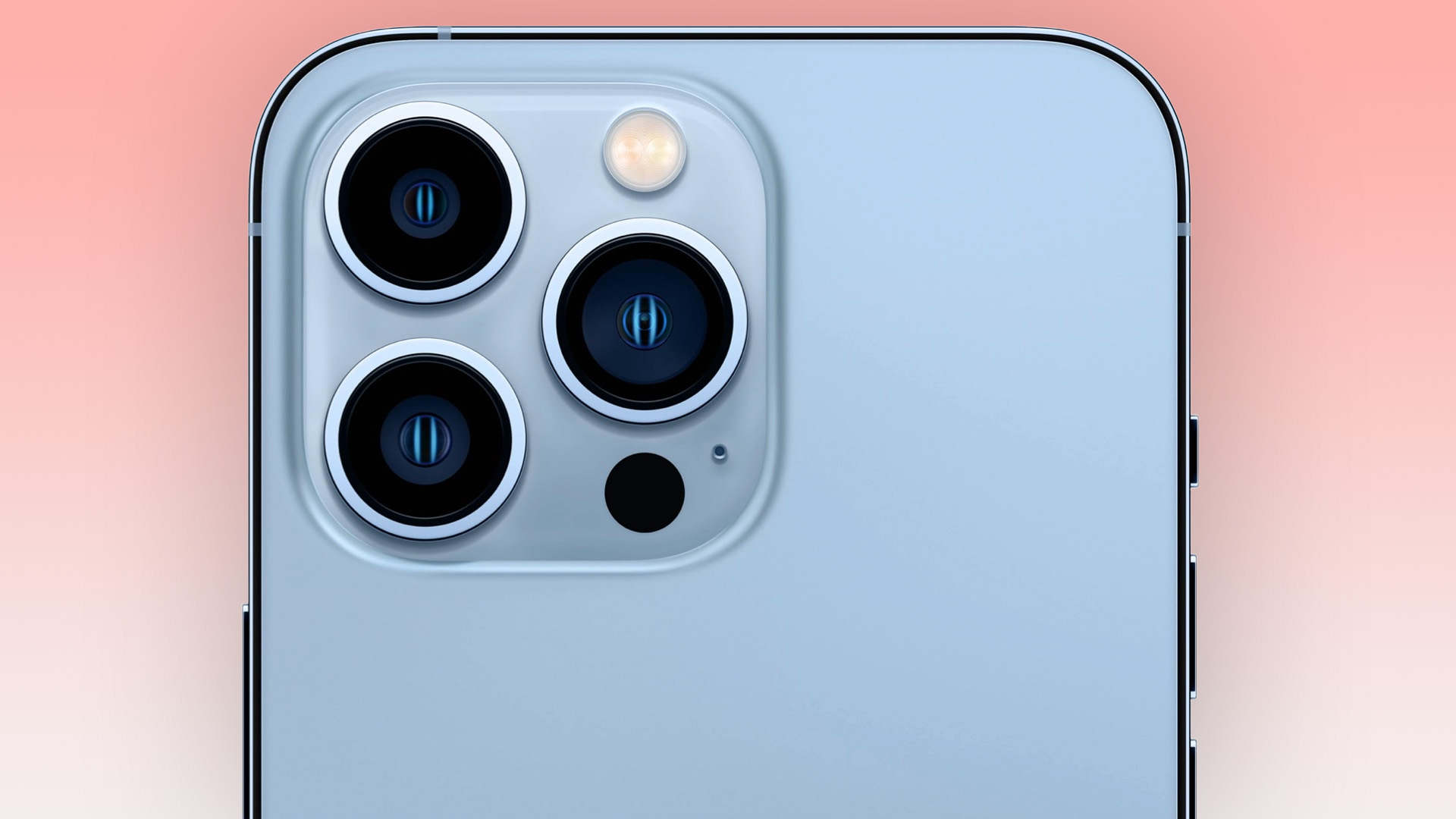
OnePlus provided an early contender for phone of the year with the OnePlus 9 Pro, though it appears somewhat overlooked as the year wore on.
The iPhone 13 Pro certainly one-upped it in a few key areas, including design, performance, all-round camera chops, and stamina.
But the OnePlus 9 Pro still has its strengths, including a phenomenal ultra-wide camera, a larger and sharper display, and a way more generous charging provision. All this and it’s quite a bit cheaper, too.
The iPhone 13 Pro’s sheer freshness gives it the edge overall, but don’t overlook the OnePlus 9 Pro as an affordable alternative, even if its days as the top dog in the range are likely numbered.